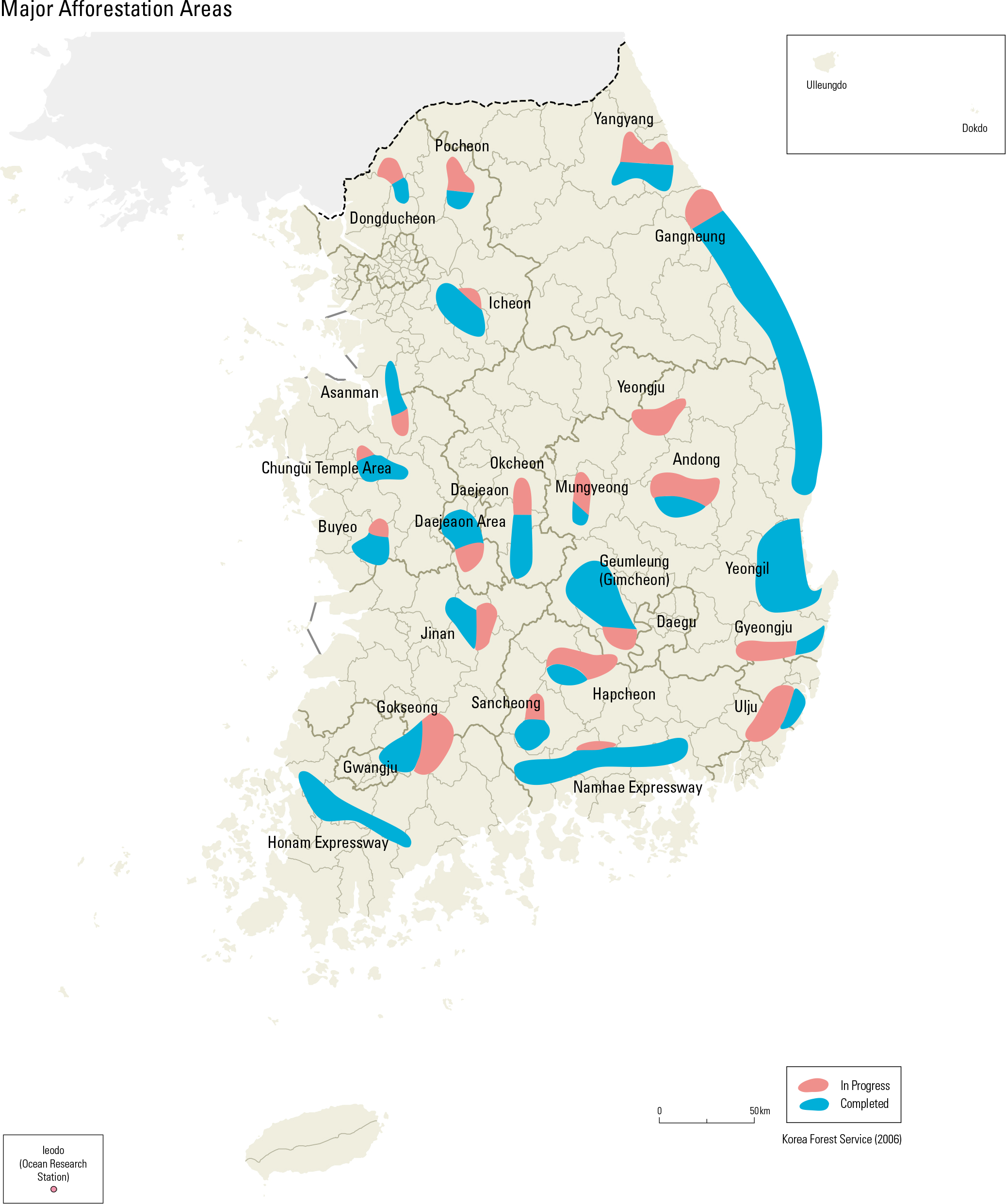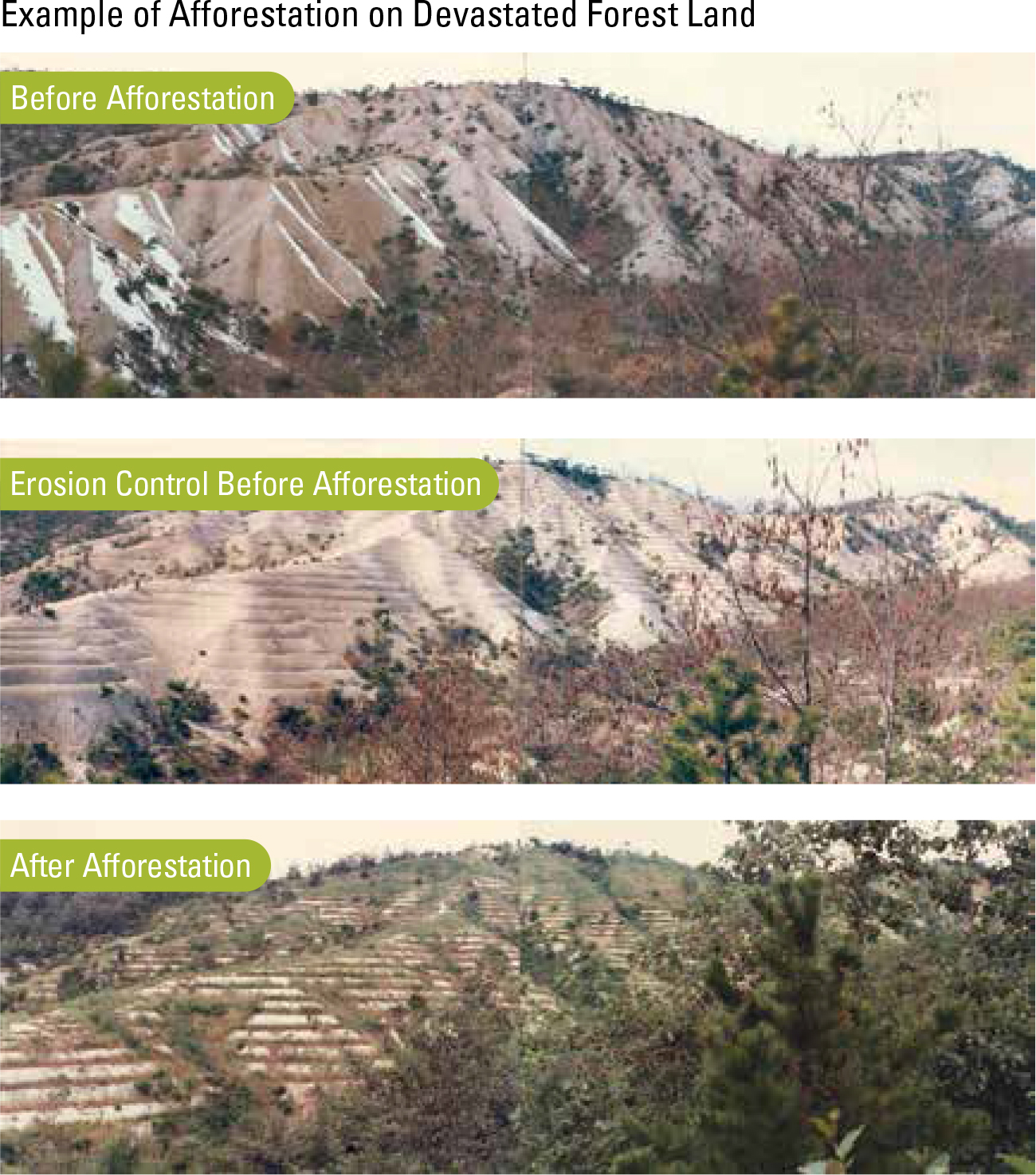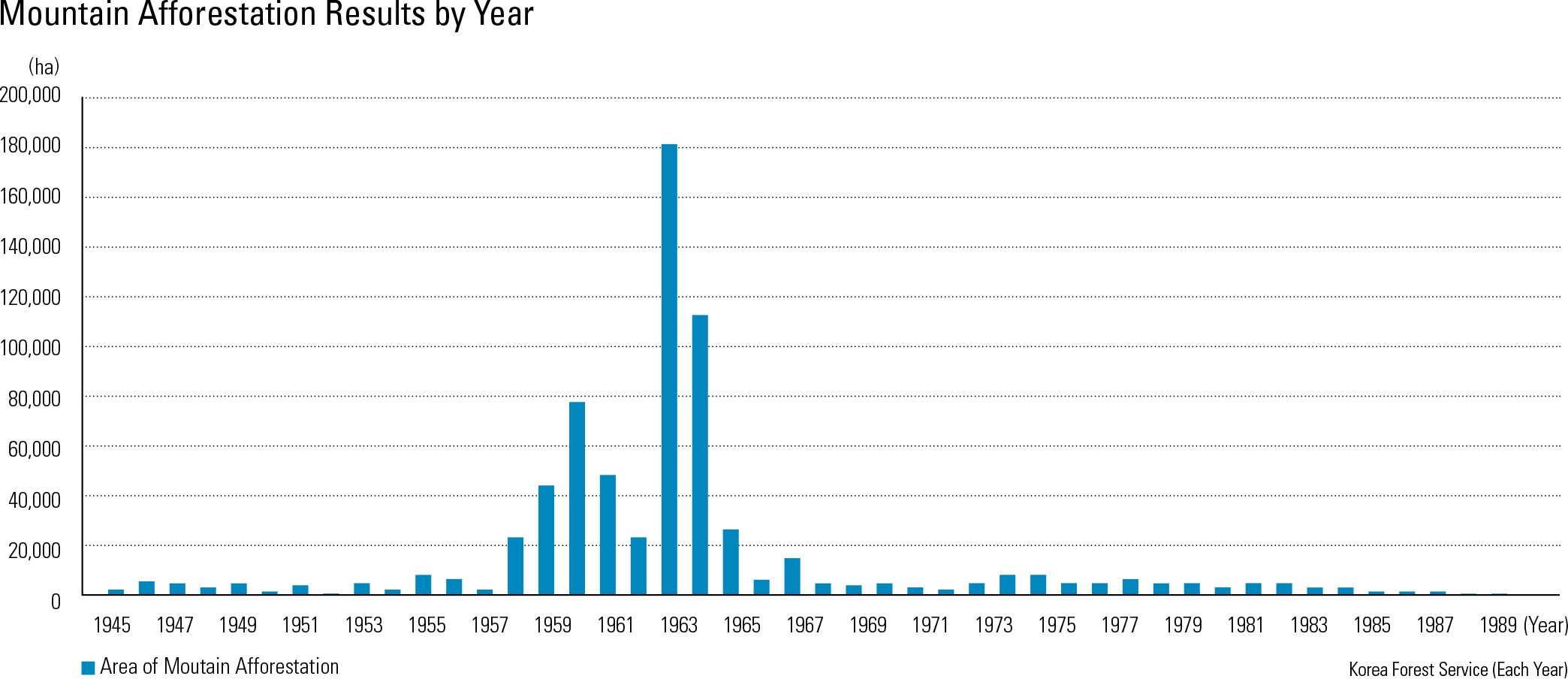English II
Korea is known for its success in combating land devastation. Long years of slash-and-burn farming and rewood logging left many parts of its territory devastated at the end of the Joseon Dynasty. To mitigate this situation, a forestation project was planned and completed for deterio- rated forests around Changuimun Gate in 1907, which is now considered the rst modern erosion control project in Korea. Some major cases of land erosion control projects conducted during the Japanese Colonial Period include reforestation for watershed conservation, poverty relief, and aid for flood victims. These projects were generally carried out in response to frequent natural disas- ters as well as relief for the poor. However, during the last few years of the Japanese Colonial Period and the Korean War, forest exploitation and defor- estation for war material accelerated throughout the country. Devastation reached its peak in 1956, with around 0.68 million ha, or 10% of South Ko- rean forests, destroyed and in need of restoration. Forest restoration and erosion control projects from the late 1950s to early 1980s prioritized the recovery of devastated land. However, before the establishment of the Korea Forest Service in 1967, many restoration areas failed to meet their objectives as they were not able to build a funda- mental vegetation base. Soon after the declaration of the Erosion Control Law (1962), a large area (0.18 million ha) was restored within a single year in 1963. Numerous projects for erosion con- trol followed suit, including the decade plan for reforestation, coastal dune xation plan, disaster restoration plan, Youngil District Special Resto- ration (1973 – 1977), First National Decade Plan for Forestation (1973 – 1978), and the Second National Decade Plan for Forestation (1979 – 1987). Restorations for such large-scale devasta- tions were completed around 1983. There are four reasons for Korea’s success with afforestation. First, it was the late President Park Chung-Hee`s leadership and persistence regarding green projects. Second, the strong social response from people who participated in tree planting and poverty relief activities supported the success of the afforestation projects. Third, the Korea Forest Service, established in 1967, played a critical role in organizing systems and regulations for forest- ry and planning restoration projects. Lastly, as most of the projects were systemized under the direct control of the government, officials took responsibility and worked hands-on to yield the best results. Of cials took direct responsibility for running operations in restoration elds.
page_2 |



